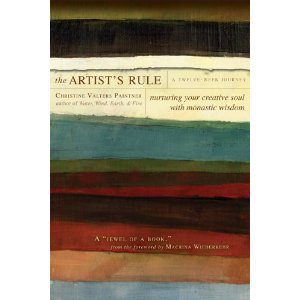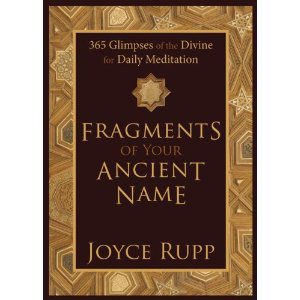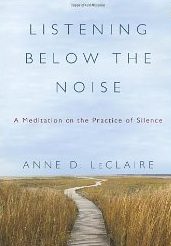 Although I failed to keep my Lenten resolution … that was apparent the day after Ash Wednesday … I did do a good job this Lent of reserving 15 minutes in the morning to read spiritual literature, pray, and sometimes say a rosary. Now that we are on the other side of Easter, I want to continue … So I really liked this chapter in the new book, “The Artist’s Rule: Nurturing Your Creative Soul With Monastic Wisdom” by Christine Valters Paintner. Here is the excerpt on silence and solitude.
Although I failed to keep my Lenten resolution … that was apparent the day after Ash Wednesday … I did do a good job this Lent of reserving 15 minutes in the morning to read spiritual literature, pray, and sometimes say a rosary. Now that we are on the other side of Easter, I want to continue … So I really liked this chapter in the new book, “The Artist’s Rule: Nurturing Your Creative Soul With Monastic Wisdom” by Christine Valters Paintner. Here is the excerpt on silence and solitude.
Silence is never merely the cessation of words. . . . Rather it is the pause that holds together— indeed, it makes sense of—all the words, both spoken and unspoken. Silence is the glue that connects our attitudes and our actions. Silence is the fullness, not emptiness; it is not absence, but the awareness of a presence. –John Chryssavgis
An essential element of committing to the monastic way is cultivating a place for silence and solitude. Like the rest at the end of a busy week that comes with Sabbath or the few moments of pause in the physical pose of shavasana at the end of a yoga practice, the nourishing dimension of silence is honored and uplifted across traditions. As Chryssavgis describes, silence is the element that holds everything together. Entering into silence means to enter into an encounter with the One who ushered us from the great silence, who spoke us into being out of the wide expanse of silent presence.
Silence can be challenging. Not just because the world we live in conspires to fill each moment with noise—from radios to televisions to movies to music to urban sounds of traffic and to the congestion of people living close together—but because there is also a fear of entering into silence. When we are used to living at a distance from our deep center— caught up in the surface chatter—dropping down into the silent pool of God’s presence can evoke fearfulness. What might we discover when we pause long enough to really hear? And yet, as Thomas Merton wrote, we each have a “vocation to solitude.” This vocation means:
. . . to deliver oneself up, to hand oneself over, entrust one- self completely to the silence of a wide landscape of woods and hills, or sea, or desert; to sit still while the sun comes up over that land and fills its silences with light. To pray and work in the morning and to labour and rest in the afternoon, and to sit still again in meditation in the evening when night falls upon that land and when the silence fills itself with darkness and with stars. This is a true and special vocation. There are a few who are willing to belong completely to such silence, to let it soak into their bones, to breathe nothing but silence, to feed on silence, and to turn to the very substance of their life into a living and vigilant silence. (Thoughts in Solitude)
Silence isn’t something we do, although we can still ourselves to receive its gifts. It is not a personal capacity, although we can cultivate practices of becoming more present. Meister Eckhart described silence as “the purest element of the soul, the soul’s most exalted place, the core, the essence of the soul.” This is the inner monastery within each of our hearts, a place of absolute stillness, our soul’s deep essence.
I echo Merton’s invitations here: Let yourself belong to silence, let silence soak into your bones, nourish you, be the air you breathe. A commitment to silence is at the heart of nurturing a contemplative practice and creative life. In silence you will discover the Great Artist from whom you emerged; you will sense the pulse of creative energy through your being so that you slowly grow to recognize that creating is your birth- right, and that you join your work with this ultimate work. But the call is nourished by the silence. We continue to return to this open space to remember who we are.
* Click here to subscribe to Beyond Blue and click here to follow Therese on Twitter and click here to join Group Beyond Blue, a depression support group. Now stop clicking.

